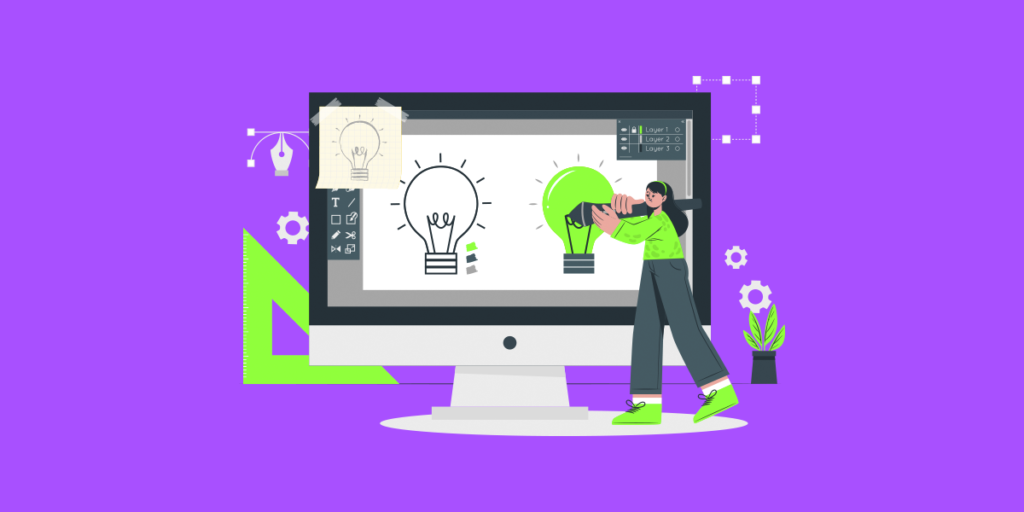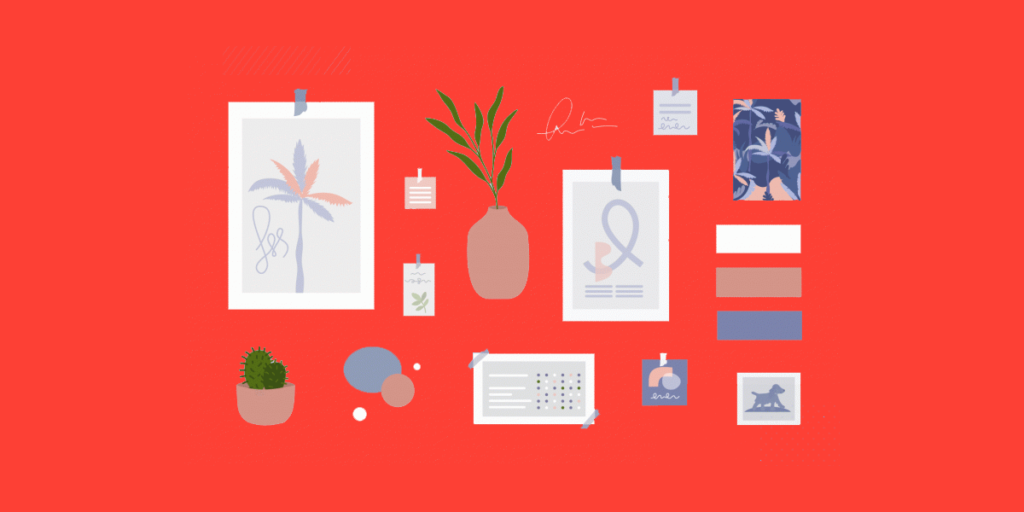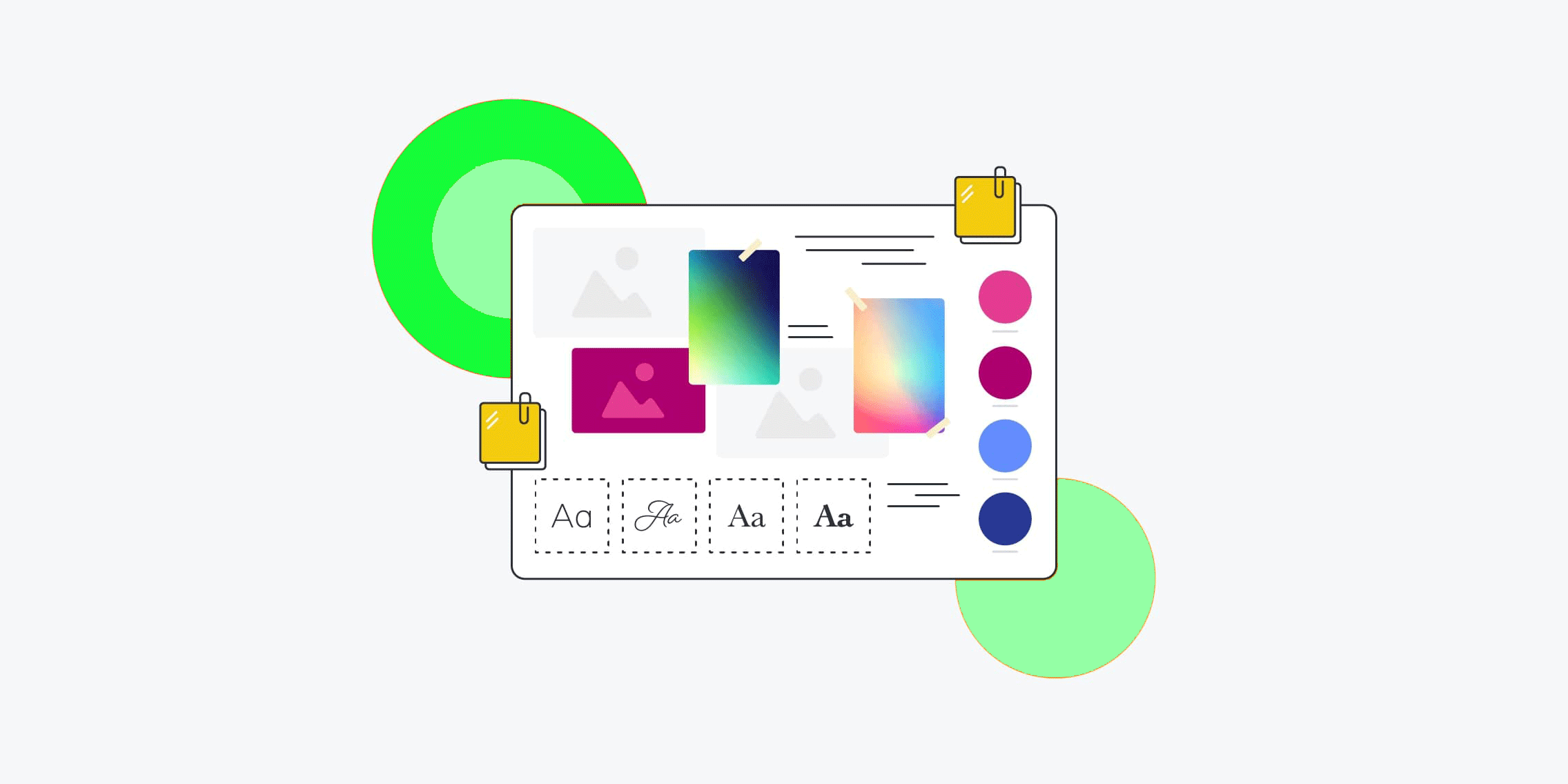Creating impressive, attractive, and engaging mood boards can transform the way you pitch your design ideas to your clients. A mood board can clearly display what’s inside your head. It would be safe to say that it’s a physical or digital representation of the idea you have in mind.
A mood board full of images, text, and textures can present an idea in such a way that the clients understand exactly what you are thinking and how impressive it is for them. Not just that, it also helps you in organizing your ideas and communicating them to your designers.
Basically, mood boards are the first physical forms of an idea that provide comprehensive visual clues to bring the idea to life. This means that your mood board should be more than just a random arrangement of visuals and text. It should paint a clear picture of your idea assorted in such a way that it helps the designers or your clients visualize the end result more clearly. How you achieve this requires careful thinking, proper implementation, and correct expression.

What are mood boards for?
Mood boards are great tools for organizing the inspiration of a project, giving your idea a basic face and body, and a helpful resource to keep the style and aesthetic of the project systematic and consistent throughout. Mood boards are also helpful in refining the look and feel of a project as they are a much affordable option than creating mock-ups or prototypes. And you can convey a lot with minimum effort and time.
Mood boards are also helpful in conveying design ideas to clients. Tell them that you would be using a gothic theme or an Elizabethan style, and they will have no idea what you are talking about. But put it in front of them and they will understand it perfectly. This kind of understanding will help both you and the client to be on the same page. It also helps in better collaboration between the members of the design team. As the idea is delivered clearly in the very initial stage, it becomes easier for everyone to work simultaneously on the same lines.

How to create an impressive UI mood board?
Whether you are out to create digital mood boards or wish to curate physical mood boards, one this is sure – the design process warrants much more than a usual graphic design project. Right from a distinct visual style to creative freedom, from apt visual inspiration to adequate know-how of UX design elements, you will need it all and more to create a mood board!
As overwhelming as it may sound to begin with, once you start with the design process, and follow the simple steps mentioned below, you will be easily able to draw inspiration and
Go beyond the digital diary
It is quite normal to only look for visual images online when working on a digital mood board. However, you don’t have to stick to online directories or picture libraries to find images for your mood board.
Moving away from your computer can work wonders as well. Take inspiration from real things a life around you. You can refer to magazines, newspapers, posters, etc. You will be surprised how taking inspiration from different sources can not only help you with visuals but also provide excellent clues for your text and overall storyboarding.
Use your phone, take pictures
The real world is filled with beauty, and you never know which part of the real world can add more value to your mood board. So, capture different moods and visuals on your phone that you think can add more visual appeal. It could be a road, beautiful scenery, a corner of your house, a bird, clouds, etc. The idea is to keep a bank of visuals that can act as a lovely background for your mood board. Depending on what kind of message you wish to create, you can choose and select the pictures.
Carefully curate the content
It is very easy to throw in a few beautiful images and add some random text to a mood board and call it a piece of work. However, until all those things come together to convey a message, the visual appeal alone will not work. Make sure that you choose your visuals and text in such a way that they tell a cohesive story. See it as an exhibition. Unless all the photographs or paintings have a common thread that connects them, the exhibition is just a random assortment of visuals. This randomness needs to be avoided.
Decide the medium, and work accordingly
Your medium will decide how you create your mood board and it’s always better if you can narrow it down on that right from the beginning. An offline mood board will need a different treatment and approach as compared to a digital one. An offline mood board can be accompanied by verbal communication thus requiring fewer details. That said, an online/digital mood board should be self-explanatory so even if someone seeing it on an email can understand it without you having to explain things.
Build the story around a central theme
Build your mood board in such a way that it has one big image giving out the central idea, surrounded by several other smaller ones supporting it. This makes it easy to convey the message boldly. Anyone seeing it will get the message at the very first glance as big images are more attention-grabbing. The supporting images/text can provide the smaller details or themes of the idea.

Create tangible mood boards
We might have shifted to a more digital way of life, but a tangible, touch-worthy way of life still holds real importance. Make use of this physical aspect of life in your mood board by cutting and pasting images from other sources like newspapers and magazines. These have a deeper impact when it comes to sending a message visually . Trust us, it works wonders.
Keep scope for change
Mood boards are just broad ideation sketches that can be changed as the original idea evolves. So, keep them loose. Making it look like the final design might make the client feel that you are not open to suggestions or changes in the design style or UI elements pointed out by them. For example, if you are using pictures from online libraries, let the watermark be. This will make the mood board appear as a rough draft. Remember, the key to convincing clients is to involve clients. Simple. Isn’t it?
Practice making mood boards
While ideation is a very instinctive thing, creating effective and attractive mood boards can be a matter of practice. So, create a unique inspiration board if you are not presenting them to a client. Show it to your colleagues to take feedback. This will improve the skills that will help you when you are making them for real presentations.
Make good use of text
While mood boards are mainly a visual medium, text can also play a vital role in making it more effective. Choose your words carefully and make sure you don’t use too many of them. They can either be used to provide extra information about the idea or support the visuals. Either way, they can be utilized as an effective medium to add more meat to your presentation.
Strike an emotional connect
The world of advertising works on emotions, and they always work when pitching an idea. So, bring in some elements that you think will bring out some real emotions by adding real things or value addition that you think will invoke some emotions in your audience. If you are talking about weddings, add some wedding-related real elements like flowers, if you are talking about beaches, add a shell and things like that.
Emotions take things beyond objectivity and it not only works for the clients, but also for the customers. So, if your idea is able to develop some emotions while presenting your idea, it will invoke those emotions in the end-users as well.
Don’t offer hints, but the complete picture
It is downright wrong to assume that people will understand everything you wish to say through your mood board. Having an idea in your head and creating a visual representation of something that you already know is one thing, and making someone else understand it is something completely different.
So, never assume that people will understand your idea right away. To make things clearer, add more cues, hints, and more information so that everything is clear. Have a second line of explanation in case your mood board is unable to state things clearly.
Create mood boards for different stages of the project
When it comes to a visual presentation of an idea, things can be very fluid. Getting feedback from the client after you have finished your project might not always work. Reworking on a completed project is a waste of time. Instead, create mood boards on different stages of your project and get visual directions whenever possible, so that both you and your client are on the same page with the implementation of the idea. This will save you both time and effort.
Test your mood board
Showing your mood board to a colleague who has been involved with you in the project is a great way of fine-tuning it. Show it to someone who has a good understanding of visual storytelling and ask for honest feedback. If they have too many questions to ask, it means that you need to rework it. If your mood board is able to effectively convey your idea, they will understand it in one go.
Enjoy the process
If you are not enjoying doing the mood boards, then probably there is something wrong with your approach. Mood boards are an amazing way of creating a visual story and bringing your idea to fruition. The best part about it is that you can be as experimental and creative as you want. There are no real rules apart from the fact that it should convey your idea. The more fun you have doing it, the better the results will be.

We hope that you are now well versed with the idea of creating a mood board that strikes the right balance. Whether it is a personal branding project or a corporate one, all it takes is some design inspiration, a good design software, an assortment of digital tools,
Frequently asked questions about mood boarding
Why is it important to create attractive mood boards?
Mood boards serve as great tools to convey your idea in a physical or digital form. They help in better visualization of what the final project will look like. Creative ideas can sound very vague when explained through words, but if you add pictures, text, visual metaphors, fonts, complete with a color scheme and similar attractive real things together, it will create a better visual presentation of your idea. Mood boards also help in keeping the members of the design team on the same page as there is a visual clue to fall back on when in doubt.
Where to take inspiration while creating mood boards?
Designers take inspiration from just about anything. Their design project could be inspired from a picture clicked on their mobile, the corner of their house, floral arrangement in a garden, nature, abstract art, the list goes on. The things to keep in mind are the basic idea of the project, the target audience, the brand’s values, etc. Preparing a mood board keeping these things in mind will help you create the right tone, visual imagery, and context in the mood board. The purpose is to pitch your idea to the client in such a way that they feel convinced about it.
What format is best suited for mood boards – physical or digital?
It is totally your choice. But it has been observed that creating a physical mood board offers relatively greater scope to experiment with than the digital ones. With digital mood boards, you will be using pretty much the same tools that you use on a daily basis for your design project. But, with a physical mood board, you have the entire physical world to take inspiration from and add those elements to your own mood board. If you are talking about a beach, you can add sand or shells to create a real-like feeling. While physical mood boards do require a lot of hard work, the results can be exceptional, making it truly worth your while.
What are some of the main things to keep in mind when working on a mood board?
The most important thing to keep in mind is that your mood board for a design project should convey your message clearly. Whether you use only images or add some text or other extra elements to convey your design inspiration, the central theme must be reaching the viewer loud and clear. You can take feedback from your colleagues before presenting it to the client to ensure whether the purpose of the mood board is being solved or not. If they have too many questions to ask, you need to rework it.




